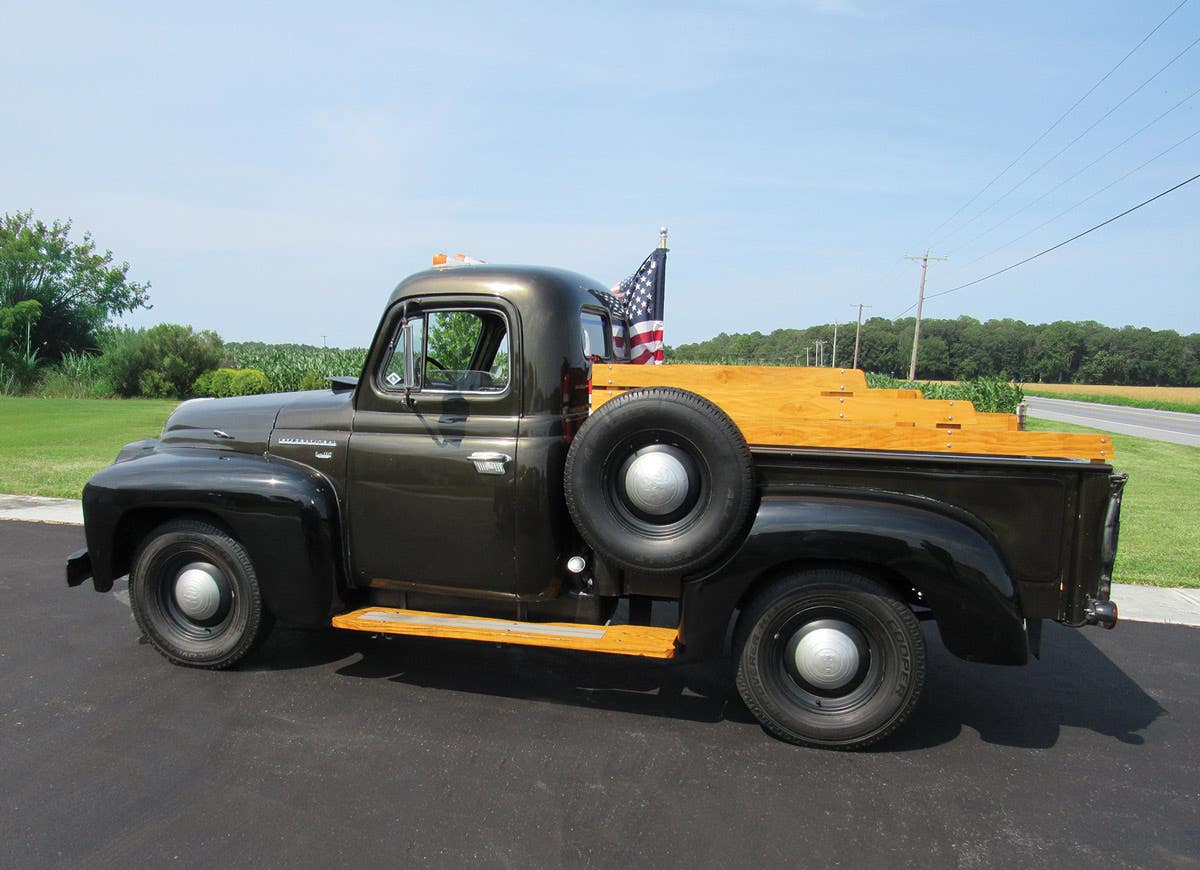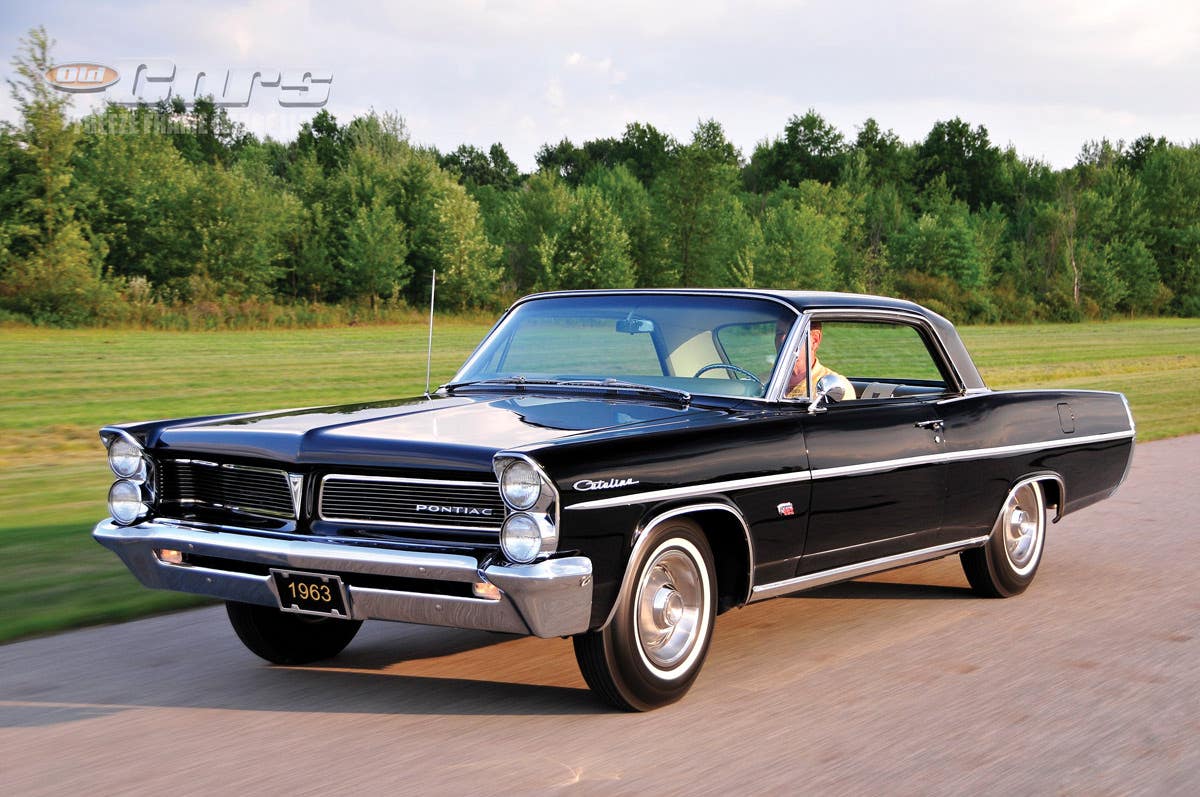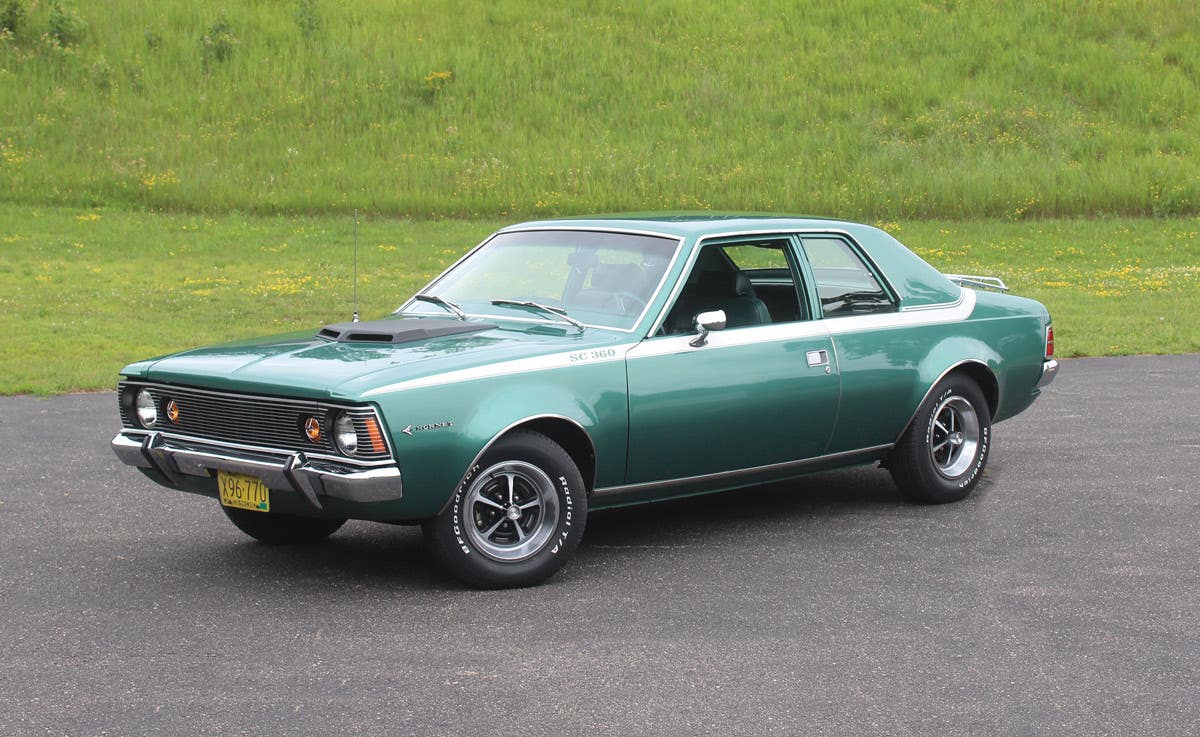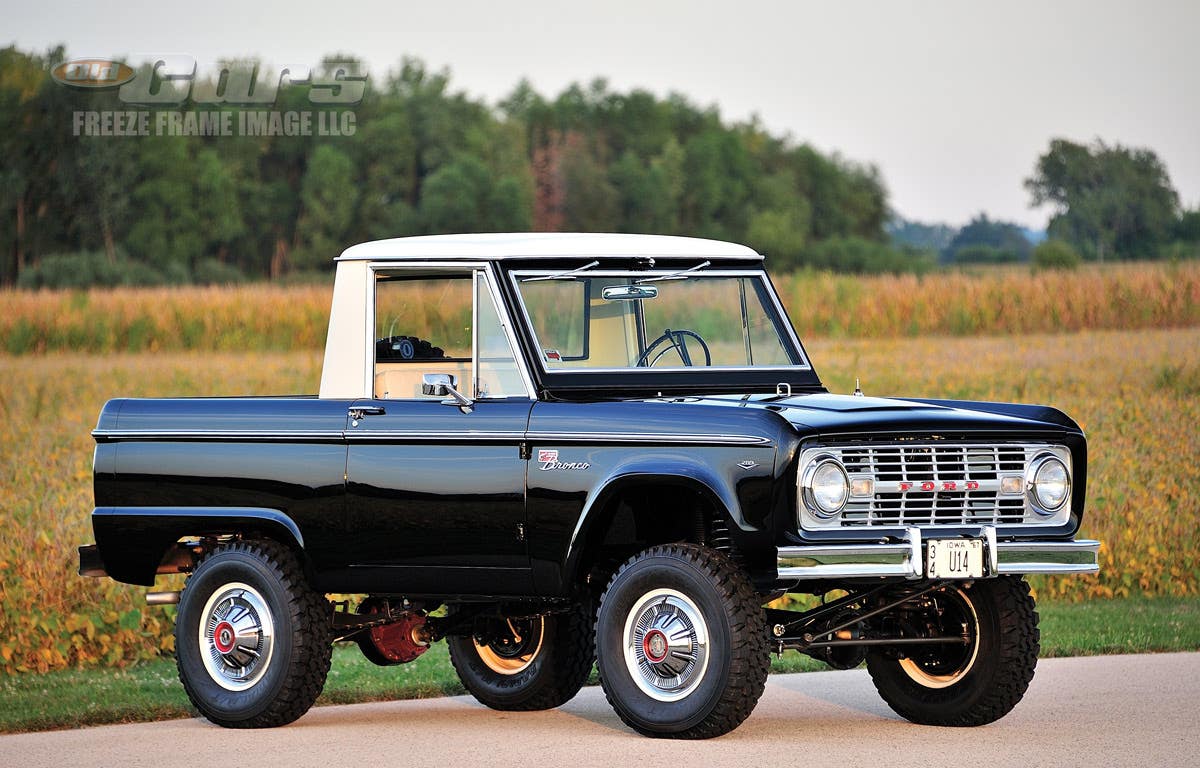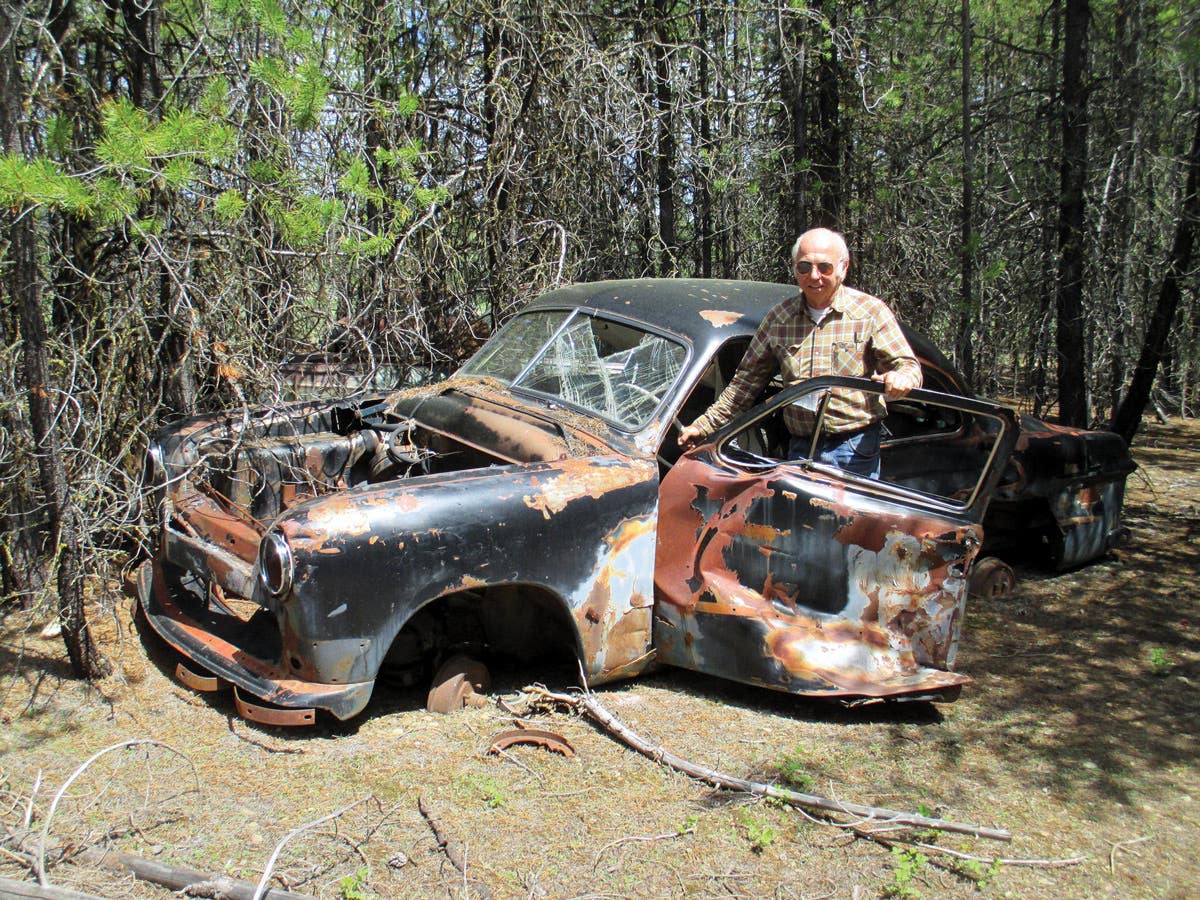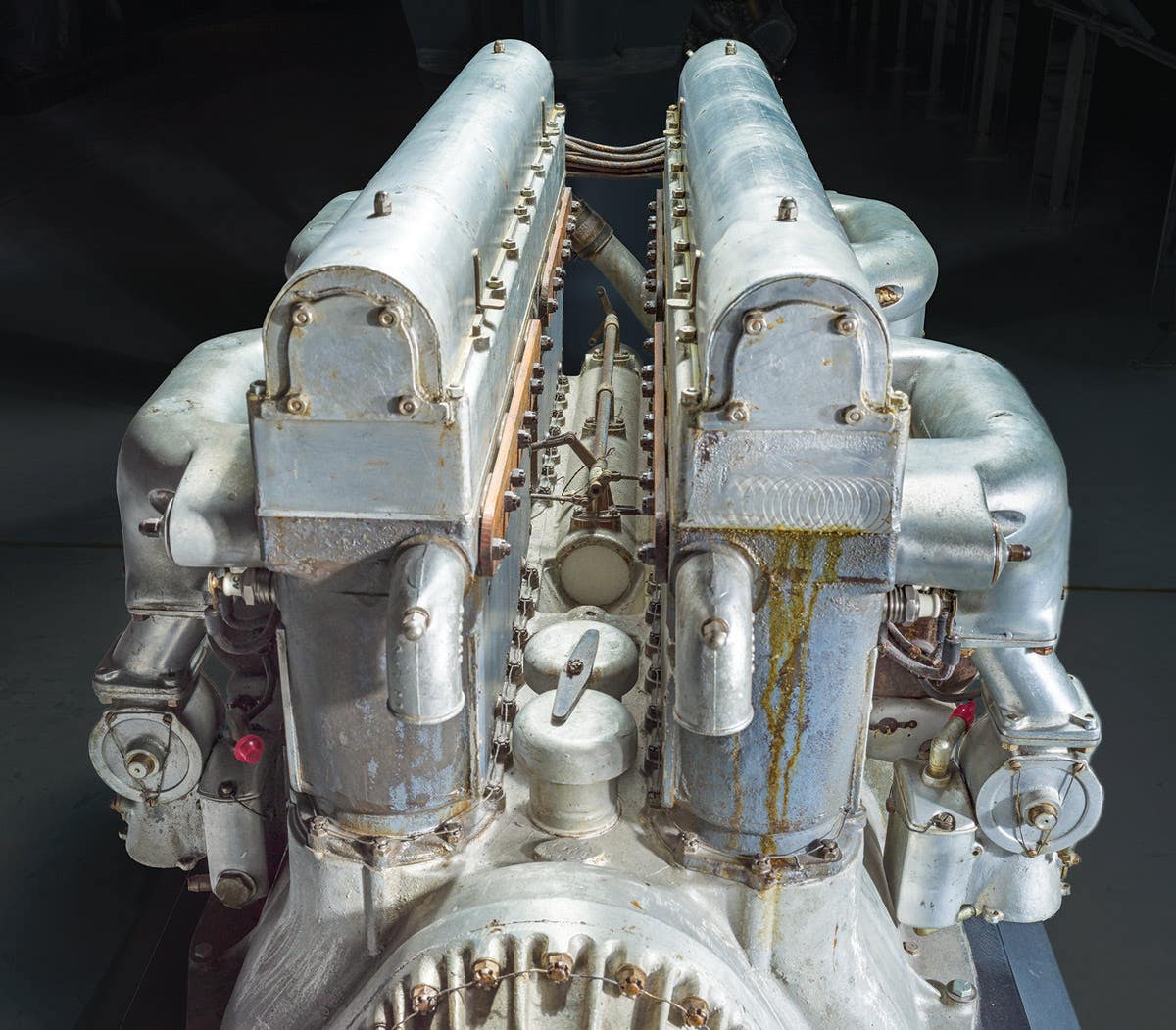Dave Lindsay of Manawa, Wis., was able to make his dream to own a Model J Duesenberg in 1997 and has been sharing the car at car shows ever since.
By Angelo Van Bogart
“I’m its most famous owner,” jokes Dave Lindsay of Manawa, Wis., when asked about his Duesenberg Model J Murphy convertible sedan. Unlike many other Duesenbergs, his car has never been owned by a silver screen star or a famous industry titan, nor has the car itself had a role in a film or TV show. However, there are other paths to stardom, and Lindsay and his car have found a different way to fame, at least in the car hobby.
Lindsay has never appeared on a movie screen and he’s never had tea with the queen, but his hard work on his family’s farm and success selling woodworking and saw mill machinery satisfied a long dream to park a Duesenberg with his other collector cars.
“When [my wife] Peggy was still alive, we joked about buying a Duesenberg and would laugh,” Lindsay said. “I think she always knew I was going to buy one.”
The pair’s interest in what is often considered the finest car ever built in the United States really grew while attending the Auburn Cord Duesenberg Club annual Reunion in Auburn, Ind., where they showed their Auburn and Cords.
“We had been to Auburn many times and we would look at all the cars, but we’d drool over the Duesenbergs,” he said.
Peggy passed away before they seriously considered a purchase, but Lindsay made their dream come true when he spotted the two-tone rose Murphy convertible sedan featured at the Blackhawk Collection exhibit during the Scottsdale, Ariz., auctions in 1997.
“Ed Fallon was the salesman — he asked me, ‘Do you want to drive it?’” Lindsay said. “There was a horse barn that I drove it around and everything seemed fine. Then I had to try to figure out how to buy it without money!”
Lindsay worked out a partial trade with the Blackhawk Collection that included selling five cars, several of them Corvettes. Of those cars he parted with, Lindsay misses selling one in particular.
“A 1920 Packard Twin-Six roadster — I regret selling that car to this day.”
Lindsay may regret what he sold to buy the Duesenberg, but he doesn’t regret the purchase.
“I sacrificed a few cars, but the bottom line is, it was worth it to get it, and I got an excellent one,” Lindsay said.
Truly, Lindsay’s Duesenberg is an excellent example. It maintains its original engine, chassis, body and firewall, a state that makes it particularly desirable to car collectors, especially Duesenberg enthusiasts.
However, a car is only as excellent as its parts, and Duesenberg parts are the most excellent, to the credit of Fred Duesenberg. Like Lindsay, Fred Duesenberg was raised on a Midwest farm after immigrating from Germany, and it was on an Iowa farm where his fascination for machines developed. From this mechanical interest shared with his brother Augie, Fred went on to build race cars bearing his name and for which he became famous, then passenger cars that only grew his legend. The first passenger car to bear the Duesenberg name was the Model A of 1922, followed by its short-lived successor, the Model X of 1927. All passenger cars were of the straight-eight variety, which reinforced the company’s well-remembered advertising slogan, “eight in a row, ready to go.”
Many automotive manufacturers folded during the 1920s, and Duesenberg never sold its high-quality car in quantity. The chassis was built to be the best, and the bodies — built by a legion of custom coachbuilders — only added to the cost, making Duesenbergs among the most expensive cars exhibited at salons filled with Pierce-Arrow, Peerlesses and Packards. Only around 1,000 Duesenberg passenger cars were built by 1926, putting Duesenberg at risk of permanently ceasing automobile manufacture.
Longtime Duesenberg admirer and well-known business empire builder E.L. Cord purchased the floundering Duesenberg passenger car business in 1926 and charged Fred with developing the world’s greatest car. To match Cord’s desires, an “incomparable frame” of heavy, 7/32-in. alloy steel was created as a foundation. High-quality components were attached to the frame with an emphasis on strength and weight savings, resulting in frequent use of aluminum. For all of its excellence, the well-developed chassis became nothing more than a stage for a star — the Fred Duesenberg-designed straight-eight of 420 cubic inches and 265 hp.
The 420-cid straight-eight puts out 265 hp — an incredible rating before World War II.
Note the extensive use of aluminum and chromium on the engine.
“The Duesenberg engine is a delight to the eye, and is symptomatic of the inherent excellence of the whole car,” stated the company. “The cylinder block is enameled green and the large exhaust pipe is finished in heat-proof green enamel. All other visible parts, including nuts, are either chromium plated or finished in polished aluminum.”
Engines need more than looks, they need to perform, and the Duesenberg was, arguably, the best. The company regularly touted 89 mph in second gear and speeds in excess of 100 mph in third, and that at a time when there were almost no roads that could allow such speed.
By this time, Fred’s reputation had made him one of the most revered mechanical engineers in the world, and it wasn’t uncommon to hear his name and “genius” in the same sentence. When the Lycoming-built engines arrived at the Duesenberg factory, he personally made sure the powerplants met his standards. Engines in Duesenberg production cars began with J-101, and as one of the earliest Duesenberg engines, the powerplant in Lindsay’s car (J-131) most certainly would have seen the magic touch of Fred Duesenberg. Then, each chassis was road tested to ensure it operated to the standards of a Duesenberg.
The personal touch that made Duesenbergs excellent extended to the coachwork. This chassis of this particular Duesenberg was clothed by the coachbuilder Walter M. Murphy Co. of Pasadena, Calif. Murphy’s payroll was second-to-none. Well-known designers Franklin Q. Hershey, Philip Wright and W. Everett Miller were all employed by Murphy, and each contributed to the cutting-edge style the company was known for. The modern designs drawn by these masters found appeal with stars and youthful owners who appreciated a Murphy body’s thin pillars around relatively large expanses of glass for an airy, racy appeal. For added glamour, the company often polished the exposed portions of the aluminum bodies it built.
The combination of skilled design and quality construction helped make Murphy’s bodies appear in the Duesenberg catalog and Murphy the most prevalent coachbuilder on the Duesenberg Model J chassis. The most popular body on the Duesenberg chassis was the Murphy convertible coupe, followed by the Murphy convertible sedan shown here.
Of the 140-plus bodies built by Murphy for the Model J chassis, 50 were convertible coupes and 32 were convertible sedans, most of them on the short wheelbase of 142-1/2 inches as Lindsay’s Duesenberg. Some Murphy convertible sedans sported a division window behind the front seat to transform the car into a berline, or a third side window built into the top behind the rear door, or an integrated trunk. As one of the earliest Murphy convertible sedans, if not the earliest, Lindsay’s car does not carry these features, perhaps preceding these variations.
The convertible sedan coachwork on this Duesenberg was created by Murphy Walter M. Murphy Co. of Pasadena, Calif.
Lindsay has regularly shown his Duesenberg in the 13 years of his ownership, and he’s probably correct when he jokes he’s its most famous owner. After the car was first listed in the inventory of the Los Angeles branch of Duesenberg in February of 1930, it was sold new by John Blalock Motor Sales of San Francisco to attorney Orman Smith. The name of Orman Smith isn’t a household name, but he clearly did well enough in his practice to afford purchasing the car from the 1931 Los Angeles new auto show for a price somewhere around $15,000. The succession of owners doesn’t include the likes of Clark Gable or Gary Cooper or Mae West, all of whom had Duesenbergs of their own. The list of owners is filled with names probably best known by hobbyists, and it was probably Tom Derro, the owner immediately before Lindsay, who made the most notable change to this Duesenberg. From 1983-1989, Derro undertook a complete restoration of the car, changing the color from green to two colors of rose. Since then, it has taken Premier First Place honors in Classic Car Club of America judging, a Senior Award in Antique Automobile Club of America events and a Best in Show at an Auburn Cord Duesenberg Club event.
Despite its accolades, Lindsay noted one minor problem when he first drove the Duesenberg.
“When I got it, it shimmied, so I mentioned it to Joe Kaufmann,” Lindsay recalled. “He said, ‘I have a fix. You put a shock absorber on the tie rod and it stops the shimmying.’ Apparently, it was an option. It was mean to drive before that — leave it to Kaufmann to know of a remedy and have the parts to fix it.”
Although Lindsay has the talents of legendary Duesenberg restorer Joe Kaufmann nearby and at his disposal, he isn’t afraid to maintain the mechanical components of his car. In the summer months, you’re equally as likely to find him under the hood of his Duesenberg or another Classic as you are working on a tractor.
Lindsay also maintains the appearance of the car’s fine restoration when he’s not minding the cows or the corn on his farm. He figures he’s put 1,500-2,000 miles on the Duesenberg during his ownership while driving it on tours and on afternoon drives to flex the straight-eight and keep all of the car’s components working properly. Such miles require work to keep the car’s appearance show-ready, and Lindsay has found help maintaining the Duesenberg’s beauty from Marlese, his wife of more than 8 years, who often lends a hand with cleaning chores; she’s even known to clean an enormous spoked wheel or two before a show.
The Lindsays’ efforts will be highlighted during the Auburn Cord Duesenberg Club Reunion in Auburn, Ind., this weekend, Sept. 2-5. There, they’ll have their Duesenberg on display, and add one more public appearance to their celebrity connection with their impressive car.
More Resources For Car Collectors
- Classic car price guides, research, books, back issues of Old Cars Weekly & more
- Get expert restoration advice for your classic car
- Get car pricing, data and history all in one place
- Sign up for Old Cars Weekly's FREE email newsletter
- Need to buy or sell your classic car? Looking for parts or memorabilia? Search our huge online classified marketplace



